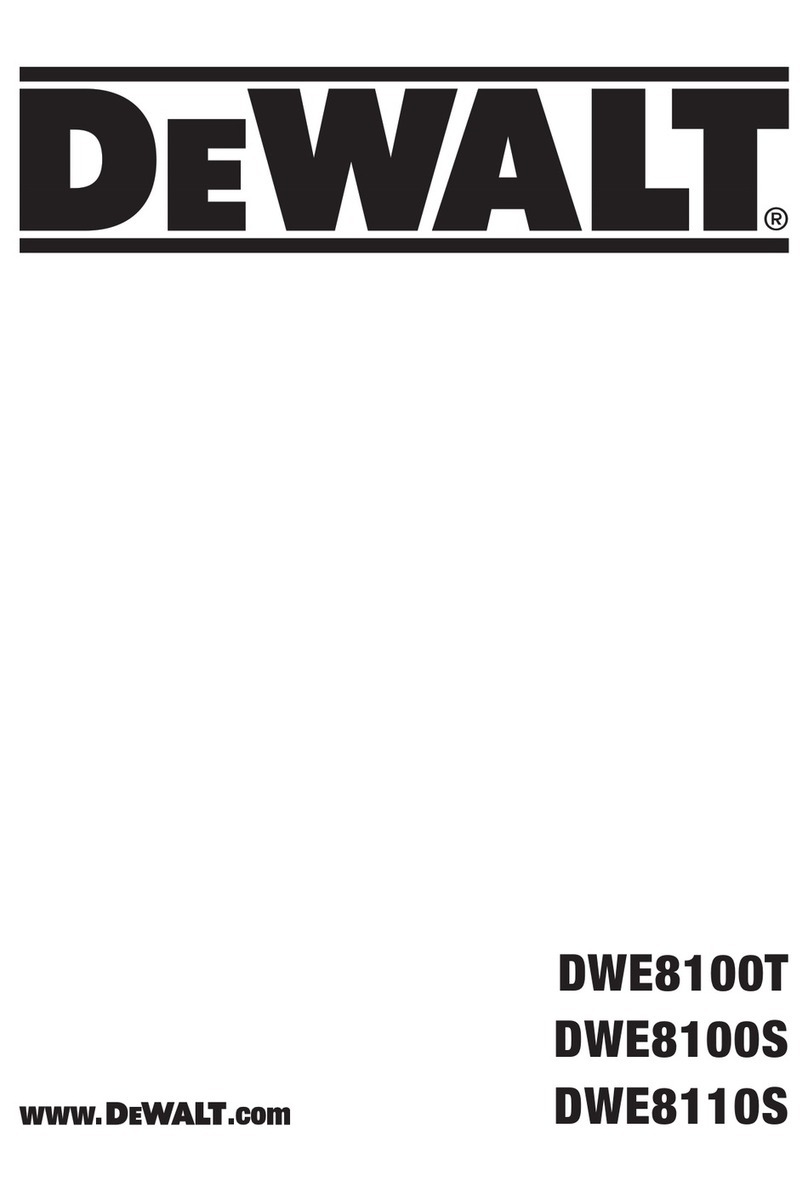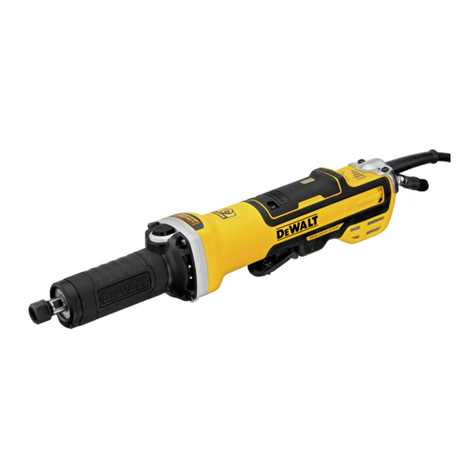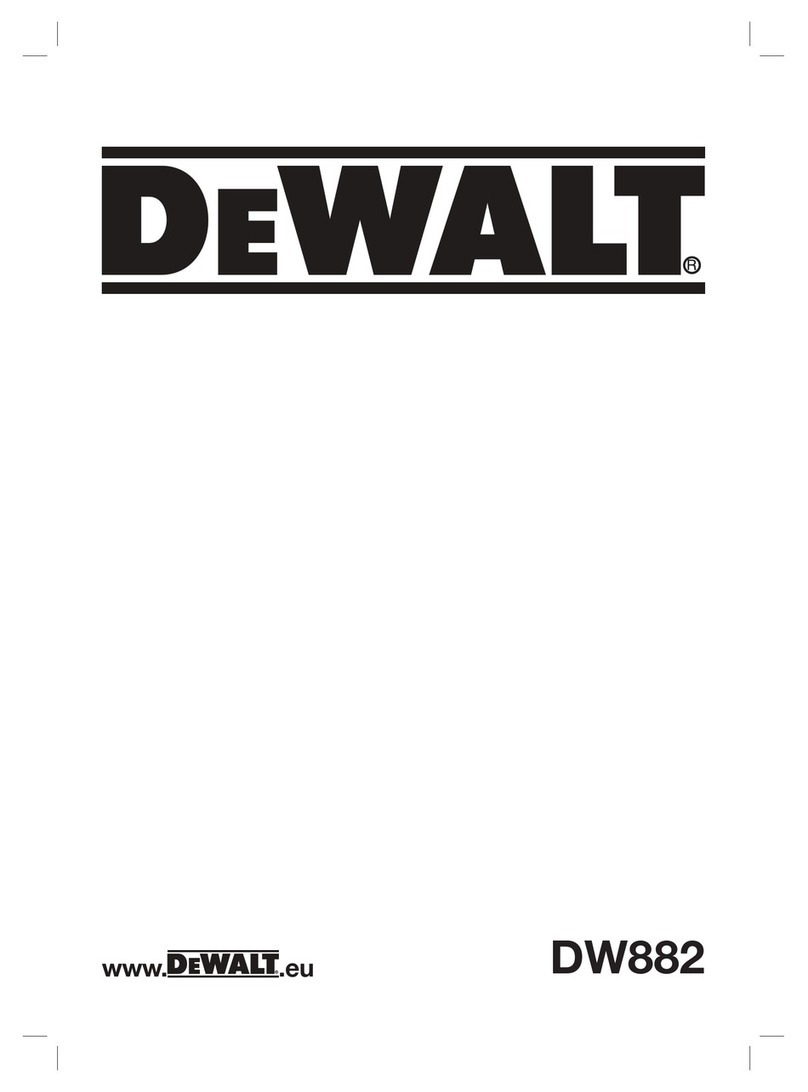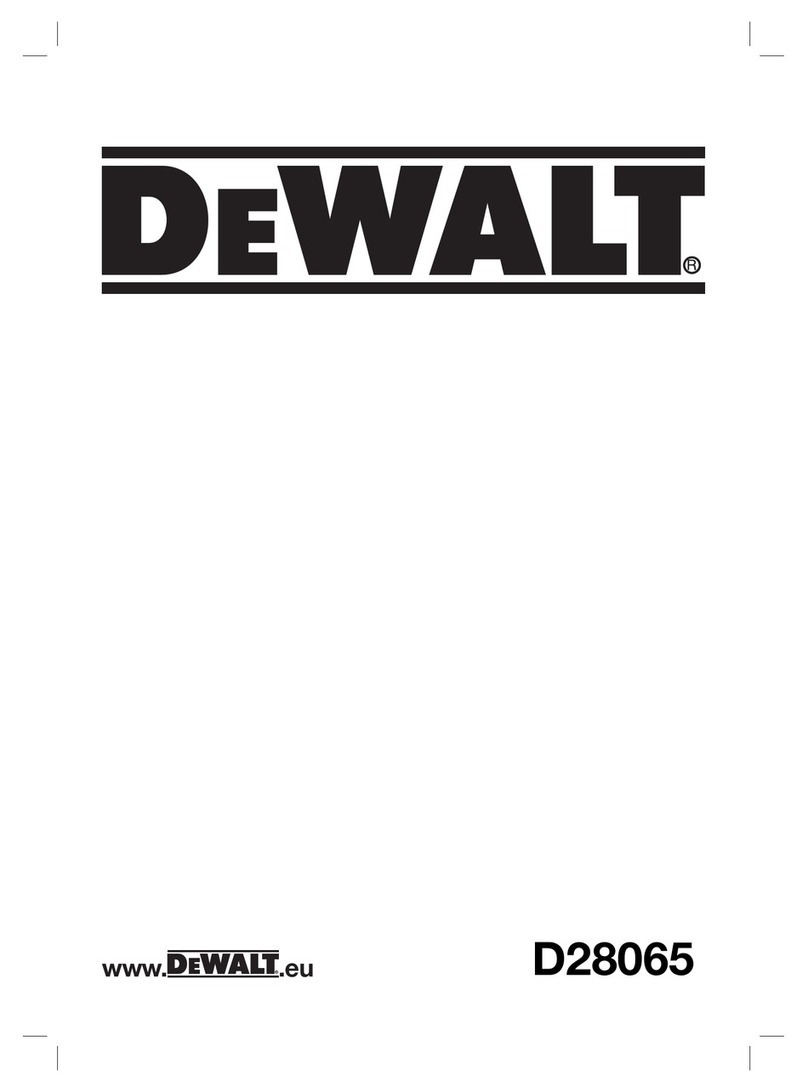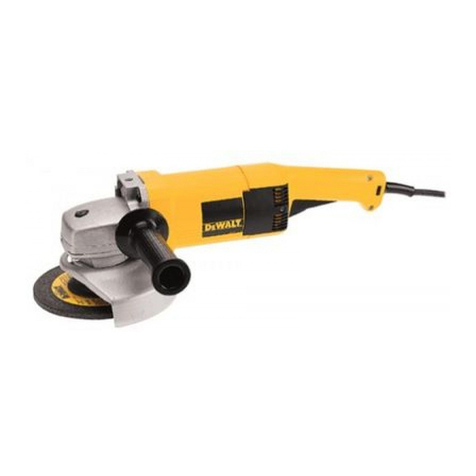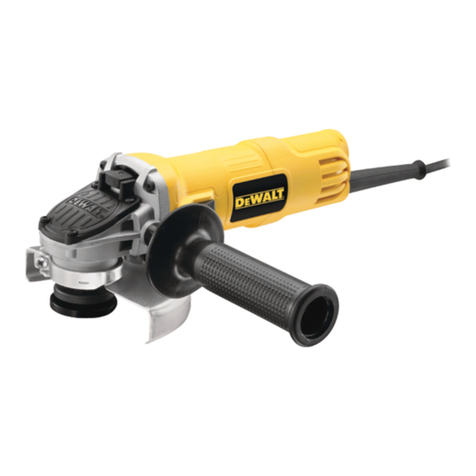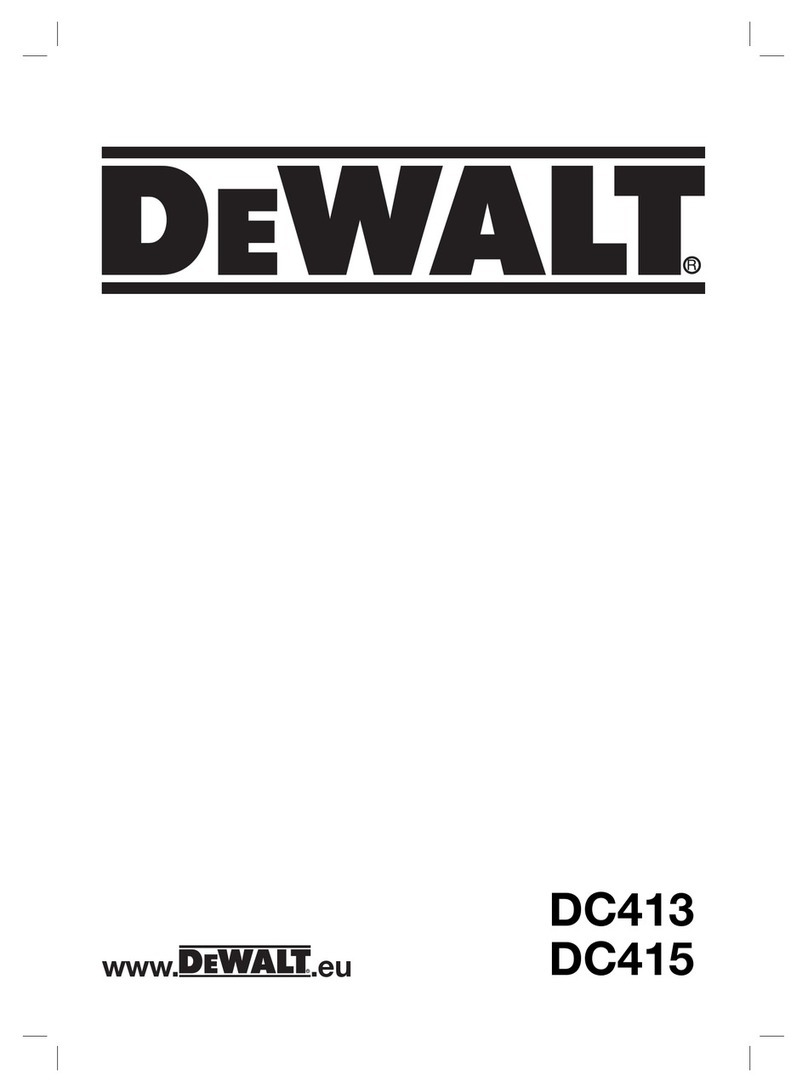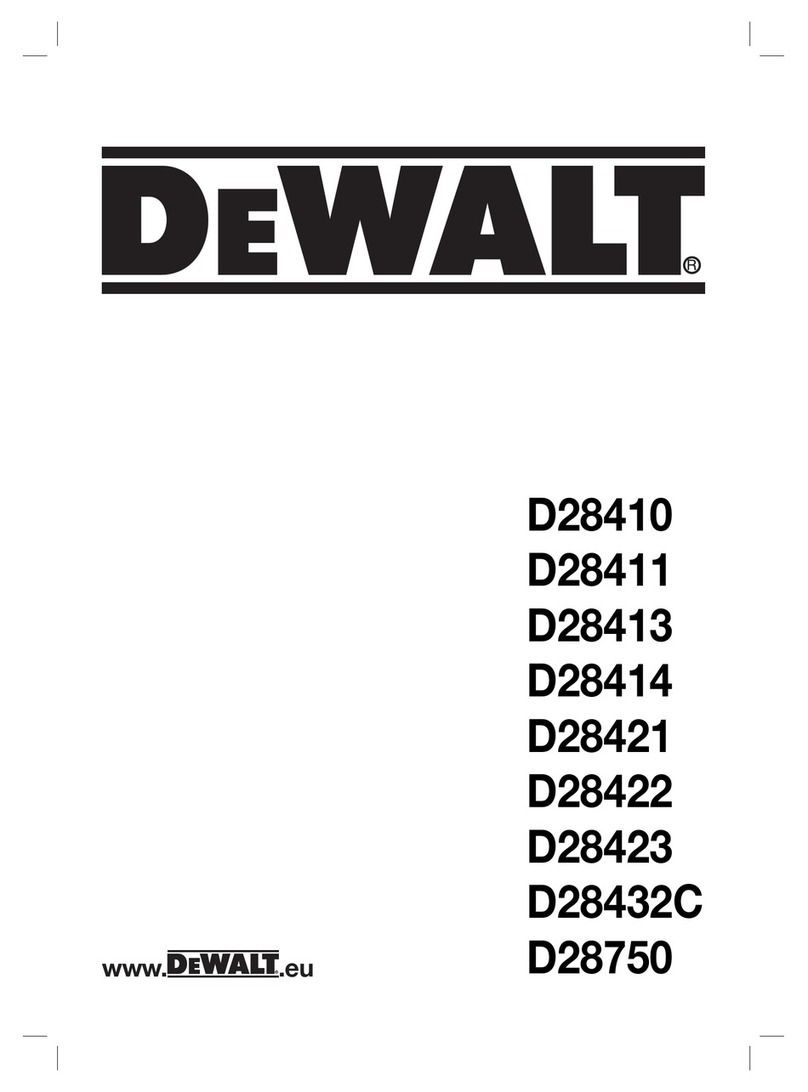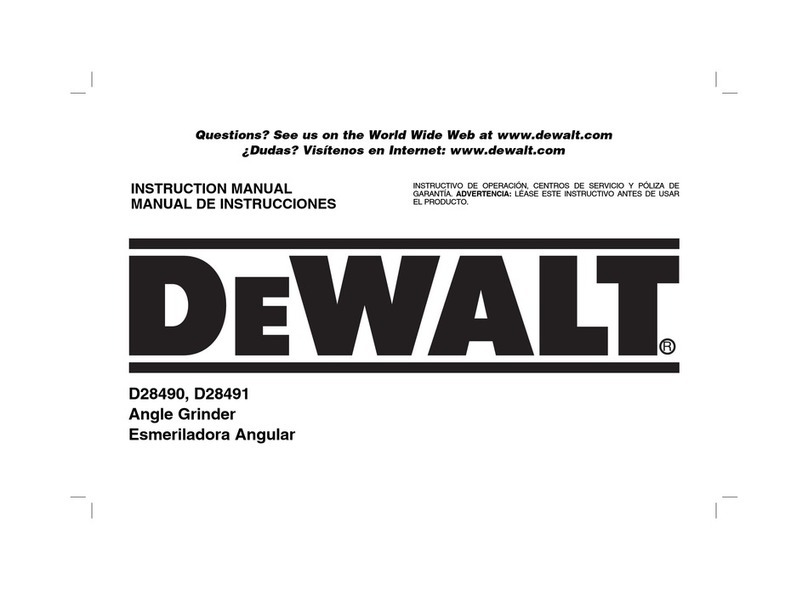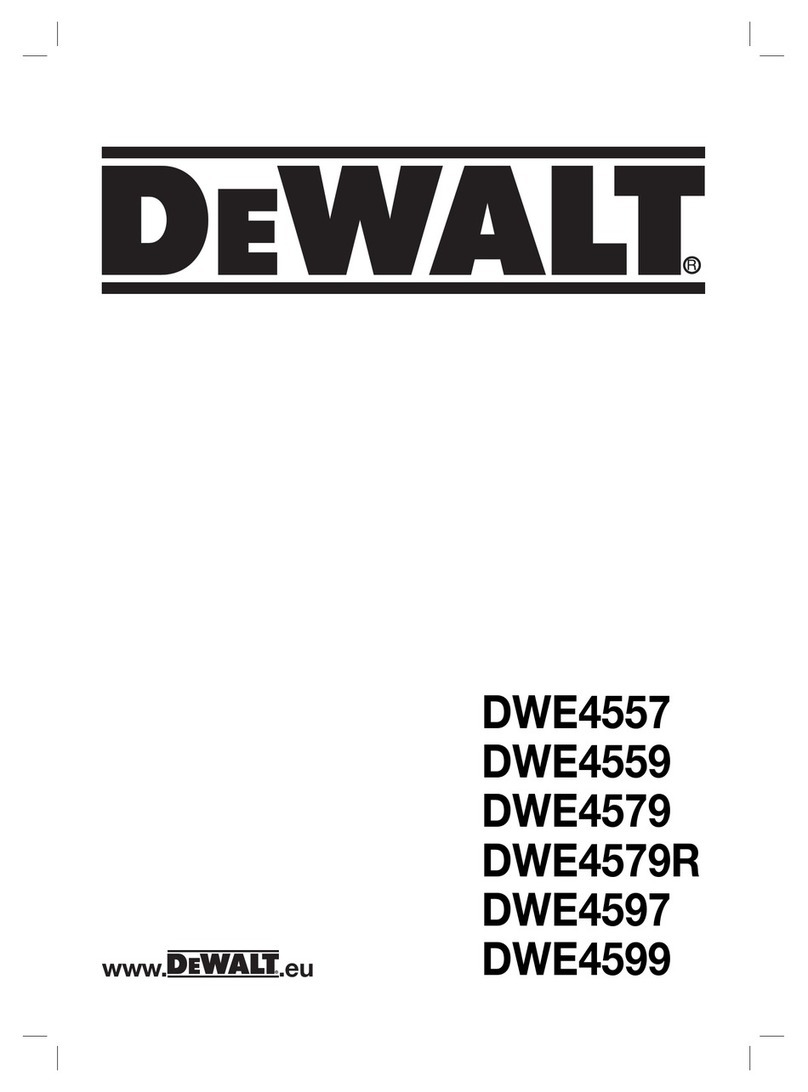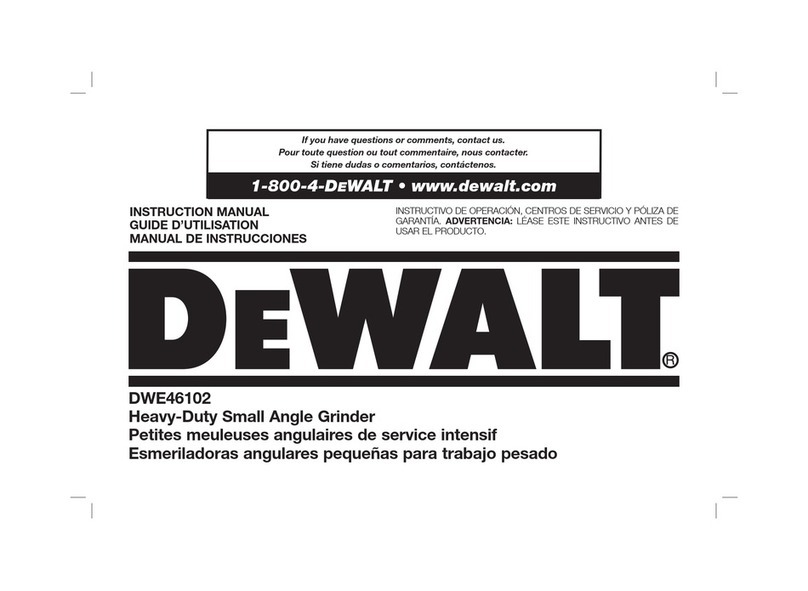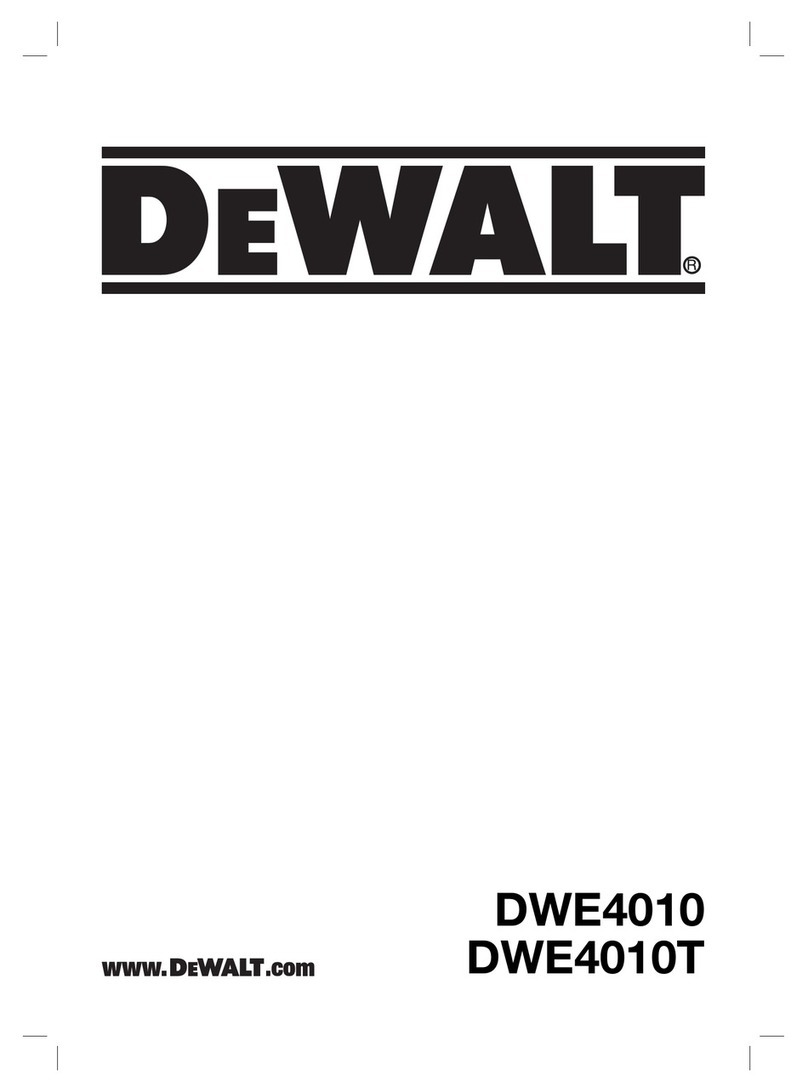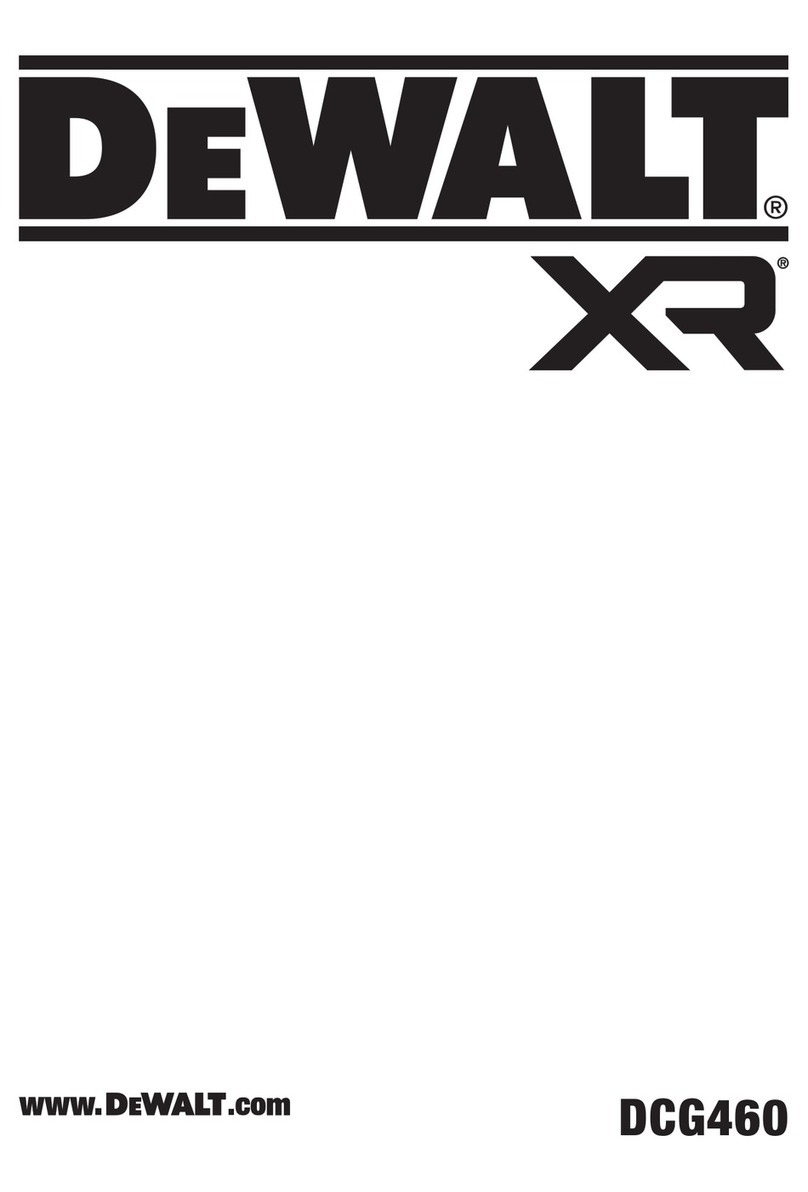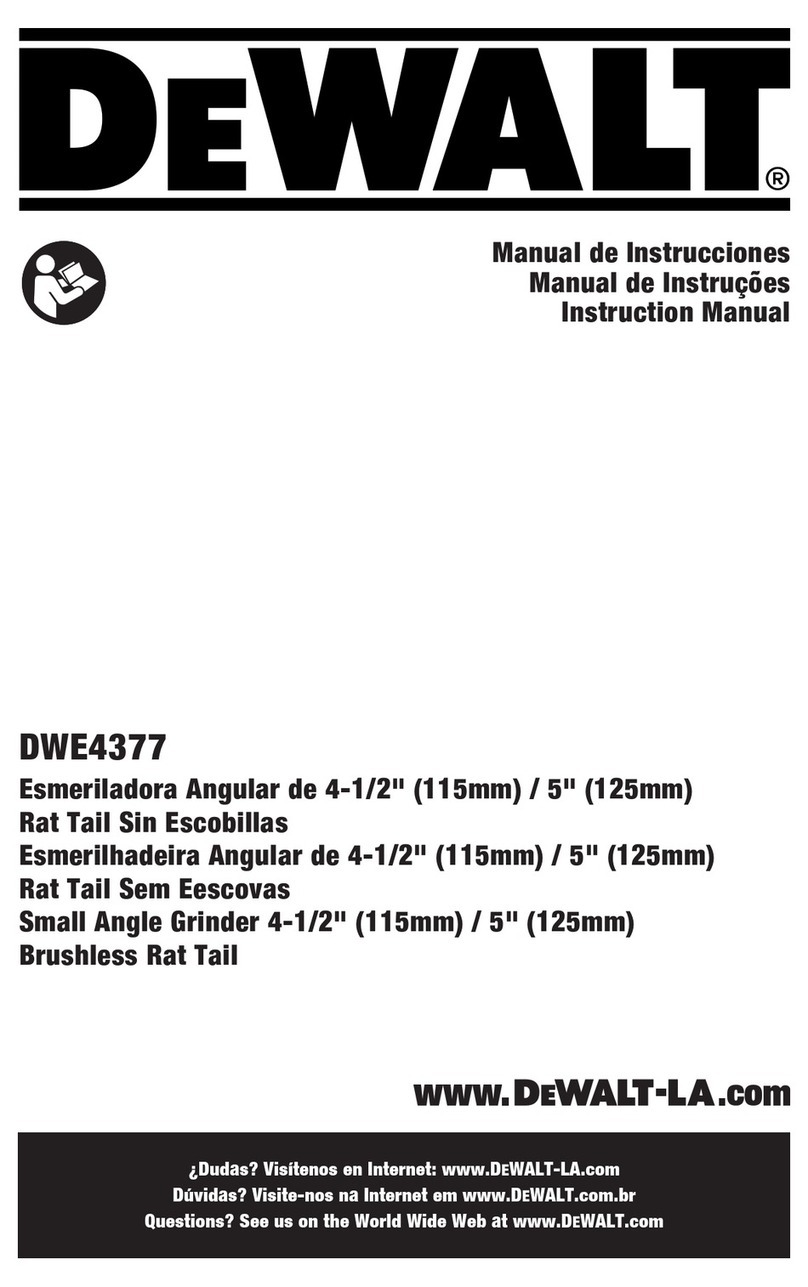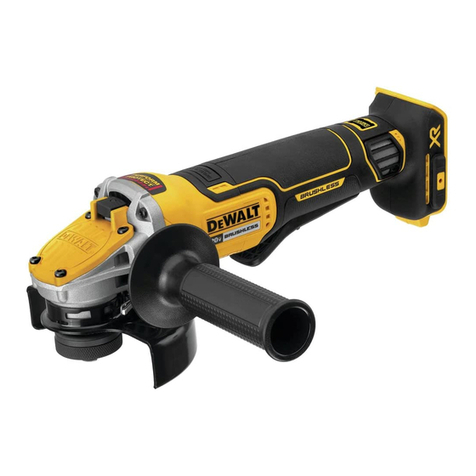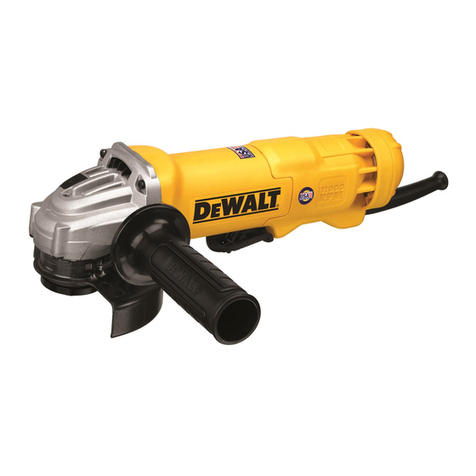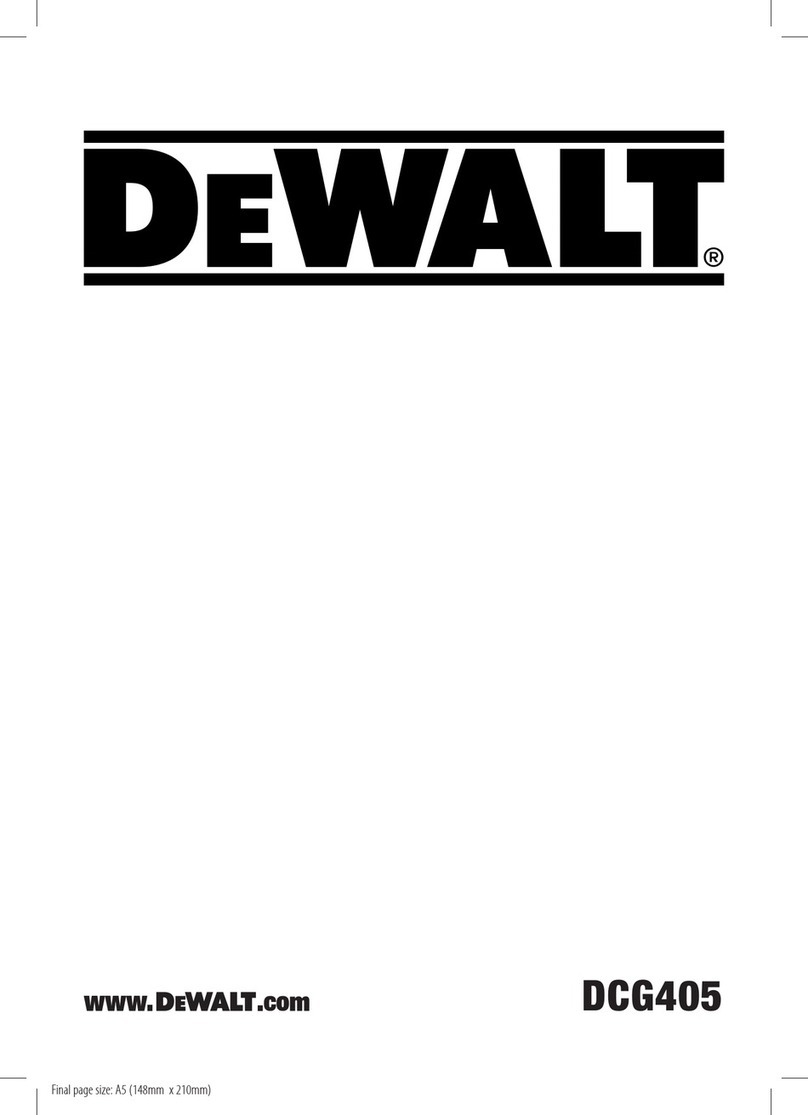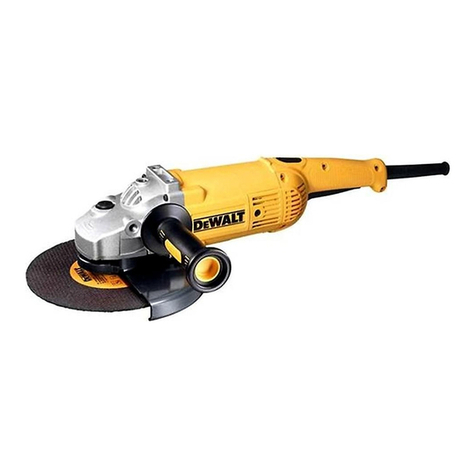
ENGLISH
6
excessive accumulation of powdered metal may cause
electricalhazards.
n ) Do not operate the power tool near flammable
materials. Sparks could ignite thesematerials.
o ) Do not use accessories that require liquid
coolants. Using water or other liquid coolants may
result in electrocution orshock.
p ) Do not use Type 11(flaring cup) wheels on this
tool. Using inappropriate accessories can result
ininjury.
q ) Always use auxiliary handle. Tighten the handle
securely. The auxiliary handle should always be used
to maintain control of the tool at alltimes.
r ) When starting the tool with a new or replacement
wheel, or a new or replacement wire brush
installed, hold the tool in a well protected area
and let it run for one minute. If the wheel has
an undetected crack or flaw, it should burst in
less than one minute. If the wire brush has loose
wires, they will be detected. Never start the tool
with a person in line with the wheel. This includes
theoperator.
s ) Use of accessories not specified in this manual
is not recommended and may be hazardous.
Use of power boosters that would cause the tool
to be driven at speeds greater than its rated speed
constitutesmisuse.
t ) To prevent the spindle end from contacting the
bottom of the hole of the hubbed wheel, use
accessories that have a threaded hole depth of
at least 21mm. Failure to use an accessory with the
appropriate thread depth could result in damage to the
hubbed wheel and injury to the operator or persons in
thearea.
u ) The arbor size of hubbed wheels, flanges, backing
pads or any other accessory must properly fit the
spindle of the power tool. Accessories with arbor
holes that do not match the mounting hardware of the
power tool will run out of balance, vibrate excessively
and may cause loss ofcontrol.
v ) Avoid bouncing the wheel or giving it rough
treatment. If this occurs, stop the tool and inspect the
wheel for cracks orflaws.
w ) Always handle and store wheels in a carefulmanner.
x ) Do not operate this tool for long periods of time.
Vibration caused by the operating action of this
tool may cause permanent injury to fingers,
hands, and arms. Use gloves to provide extra cushion,
take frequent rest periods, and limit daily time ofuse.
Kickback and Related Warnings
Kickback is a sudden reaction to a pinched or snagged rotating
wheel, backing pad, brush or any other accessory. Pinching or
snagging causes rapid stalling of the rotating accessory which
in turn causes the uncontrolled power tool to be forced in the
direction opposite of the accessory’s rotation at the point of
thebinding.
power tool. Accessories running faster than their rated
speed can break and flyapart.
e ) The outside diameter and the thickness of your
accessory must be within the capacity rating of
your power tool. Incorrectly sized accessories cannot
be adequately guarded orcontrolled.
f ) Threaded mounting of accessories must match
the grinder spindle thread. For accessories
mounted by flanges, the arbor hole of the
accessory must fit the locating diameter of the
flange. Accessories that do not match the mounting
hardware of the power tool will run out of balance,
vibrate excessively and may cause loss ofcontrol.
g ) Do not use a damaged accessory. Before each use
inspect the accessory such as abrasive wheels for
chips and cracks, backing pad for cracks, tear or
excess wear, wire brush for loose or cracked wires.
If power tool or accessory is dropped, inspect for
damage or install an undamaged accessory. After
inspecting and installing an accessory, position
yourself and bystanders away from the plane of
the rotating accessory and run the power tool
at maximum no‑load speed for one minute.
Damaged accessories will normally break apart during
this testtime.
h ) Wear personal protective equipment. Depending
on application, use face shield, safety goggles or
safety glasses. As appropriate, wear dust mask,
hearing protectors, gloves and workshop apron
capable of stopping small abrasive or workpiece
fragments. The eye protection must be capable
of stopping flying debris generated by various
operations. The dust mask or respirator must be
capable of filtrating particles generated by your
operation. Prolonged exposure to high intensity noise
may cause hearingloss.
i ) Keep bystanders a safe distance away from work
area. Anyone entering the work area must wear
personal protective equipment. Fragments of
workpiece or of a broken accessory may fly away and
cause injury beyond immediate area ofoperation.
j ) Hold the power tool by insulated gripping
surfaces only, when performing an operation
where the cutting accessory may contact hidden
wiring. Cutting accessory contacting a “live” wire may
make exposed metal parts of the power tool “live” and
could give the operator an electricshock.
k ) Never lay the power tool down until the accessory
has come to a complete stop. The spinning accessory
may grab the surface and pull the power tool out of
yourcontrol.
l ) Do not run the power tool while carrying it at your
side. Accidental contact with the spinning accessory
could snag your clothing, pulling the accessory into
yourbody.
m ) Regularly clean the power tool’s air vents. The
motor’s fan will draw the dust inside the housing and
